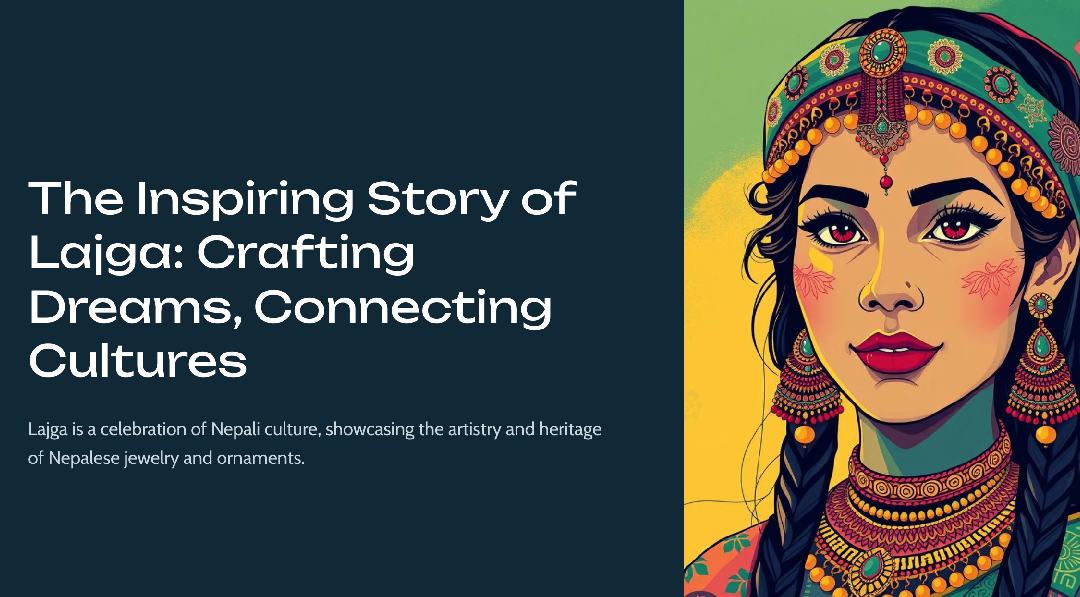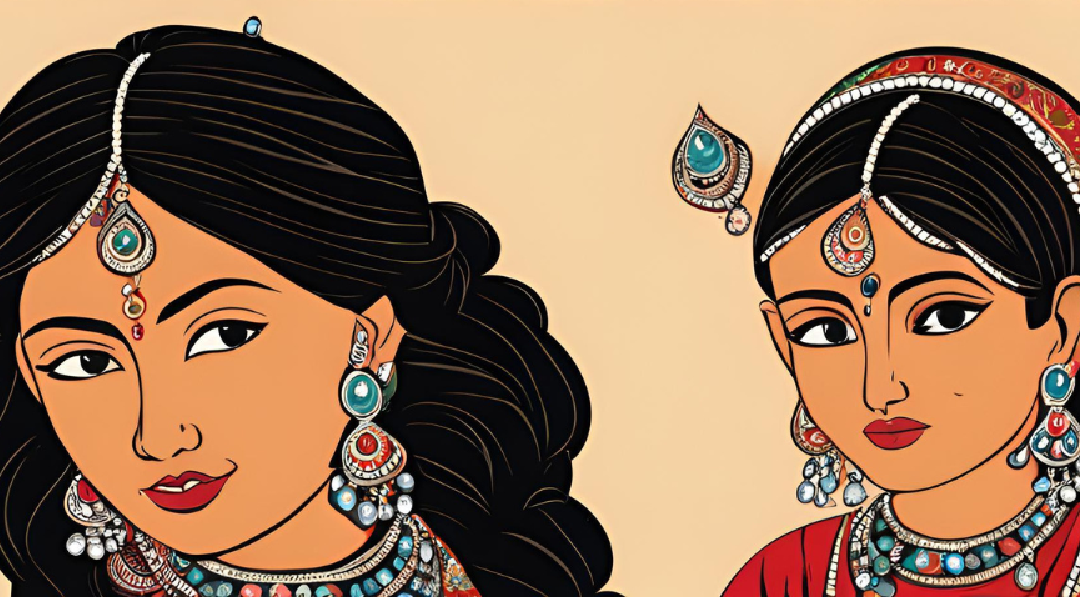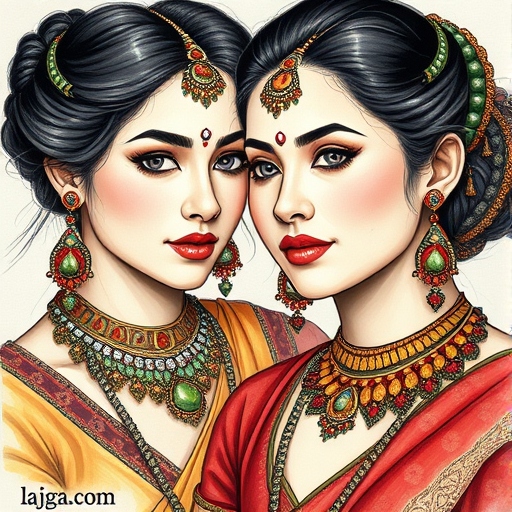The Newari people are an amazing group who have lived in Nepal for a long time! They have made a huge impact on Nepal’s culture, and their traditions are super interesting. Nestled in the heart of Nepal, the Newar community stands as a guardian of tradition, art, and heritage. Known for their exquisite craftsmanship and deep-rooted cultural practices, the Newar have preserved their identity through generations. Among the many treasures of Newari culture, jewelry holds a profound significance—more than just adornments, these intricate pieces are woven with history, spirituality, and social identity.
Newari women wear their traditional jewelry not only during festivals and ceremonies but also in everyday life, carrying with them symbols of ancestry, devotion, and protection. Crafted from gold, silver, and precious stones, each piece is a testament to the extraordinary skills of Newari artisans, reflecting centuries of craftsmanship and storytelling.
Beyond jewelry, Newari culture is a tapestry of vibrant festivals, sacred rituals, stunning traditional attire, and awe-inspiring architectural marvels that have withstood the test of time. This blog explores the elegance of Newari jewelry and delves into the rich traditions that define this remarkable community.
This blog delves into the beauty of Newari jewelry and explores the essence of Newari culture, providing insight into the traditions that define this remarkable community.
Festivals & Ornaments
Newars celebrate various festivals where traditional jewelry is worn as a mark of beauty, blessings, and cultural pride. Some key festivals include:
- Indra Jatra – Women adorn themselves with gold and silver jewelry while men wear traditional attire.
- Mha Puja (Newar New Year) – Families celebrate by wearing their best clothes and jewelry.
- Guthi Ceremonies – Special social and religious gatherings where ornaments signify one’s clan and tradition.
Legacy of Newari jewelry
Newari jewelry has a history dating back centuries, influenced by Hindu and Buddhist traditions. The Newari ornaments is as rich and diverse as the culture itself. It’s believed that the tradition of crafting and wearing ornaments dates back to ancient times. As the Newar civilization flourished in the Kathmandu Valley, so did the art of creating exquisite jewelry.
Initially, ornaments were probably made from natural materials like beads, bones, and shells. Over time, with the development of metalworking techniques, gold, silver, and copper became popular choices. The designs were simple at first, often inspired by nature or geometric patterns.
Newari people have lots of different kinds of ornaments. Some popular ones are:
- Sikha: A Symbol of Wisdom
The sikha is a small, round ornament often worn on the forehead. It’s usually made of gold or silver and is decorated with beautiful designs. In Newari culture, it’s seen as a symbol of wisdom and intelligence.
- Nyafosikha: The Bridal Crown
The nyafosikha is a special kind of headpiece worn by Newari brides. It’s like a crown made of gold or silver and is decorated with lots of colorful stones and pearls. The nyafosikha is a very important part of a Newari wedding.
- Kalli: Anklets with a Purpose
Kalli are beautiful anklets worn by Newari women. They come in different styles and designs. Besides looking pretty, they also produce a lovely sound when the wearer walks, which is believed to ward off evil spirits.
These are just a few more examples of the amazing world of Newari ornaments. Each piece has its own story and meaning.
- Makansi: The Earring with a Unique Shape
Makashi, or gold headpieces, are worn by Newari brides and young girls during special ceremonies. These ornate head ornaments enhance beauty while also signifying purity and cultural pride.
- Tayo: The Lucky Necklace
Tayo is one of the most iconic pieces of Newari jewelry. This large, crescent-shaped pendant, often made of gold, features intricate designs, and is associated with wealth and good fortune. It is commonly worn by Newari women during festivals and weddings.
- Bulaki: Cultural heritage and spiritual protection
Bulaki is a small gold ornament worn on the nose. It is especially significant for elderly Newari women and carries religious importance.
- Tilhari: A symbol of marital status
Tilhari is a traditional necklace worn by married women. It consists of a long string of red beads with gold cylindrical pendants, representing marital status and longevity.
Meaning and Spiritual Significance
Newari jewelry is more than just ornamental—each piece carries a deep spiritual meaning. For instance, the Tayo, a pendant worn by married women, is believed to offer protection and bring good fortune. The Loha, a choker-style necklace, represents a woman’s marital status, while the large, crescent-shaped Makashi earrings are thought to enhance both beauty and spiritual well-being. These jewelry pieces reflect the wearer’s strong connection to their cultural heritage, beliefs, and family traditions.
The Artisans Behind Newari Jewelry
Newari jewelry is crafted by skilled artisans, mainly from the Shakya and Sunar castes, using traditional tools and techniques. Many of these artisans come from families who have passed down their craft through generations, preserving the rich heritage.
Despite modern influences, handmade Newari jewelry remains in high demand both locally and internationally. These craftsmen continue to blend tradition with contemporary design, keeping their art alive and relevant.
Essence of Newari Culture
Newari culture is one of the most vibrant and preserved cultures in Nepal. It encompasses unique traditions, cuisine, festivals, language, and architecture making it a significant part of Nepal’s heritage.
Language and Literature of the Newar Community
The Newar people speak Nepal Bhasa (Newari), an ancient language with its own script, Ranjana. Though it’s under threat due to the dominance of Nepali, efforts to preserve it continue.
Newar literature, rich in religious and cultural themes, blends Buddhism, Hinduism, and folklore. While modern literature evolves, oral traditions of songs and stories are still passed down, keeping the language and heritage alive.
Traditional Newari Attire
Newari attire reflects the culture of the Kathmandu Valley, with distinct outfits for men and women.
For Women: Women wear the Gunyo Cholo, a red blouse, long skirt, and matching scarf, often paired with jewelry like the Tayo pendant to symbolize marital status.
For Men: Men wear the Daura Suruwal, a long shirt and jacket combo, along with a traditional topi.
These garments, made from rich fabrics and intricate designs, showcase Newar craftsmanship and cultural pride.
Newari Ornaments : A Timeless Legacy
Newari ornaments are more than just beautiful pieces of jewelry. They are living testaments to a rich and vibrant culture. From their intricate designs to their deep cultural significance, these ornaments are a true reflection of the Newari people’s artistry and history.
By understanding the history, materials, and craftsmanship behind these ornaments, we develop a deeper appreciation for this cultural heritage. It’s important to protect and preserve these traditions for future generations.
So, the next time you see a Newari ornament, remember the skilled hands that crafted it and the stories it holds. Let’s celebrate and cherish this beautiful part of our cultural heritage.





